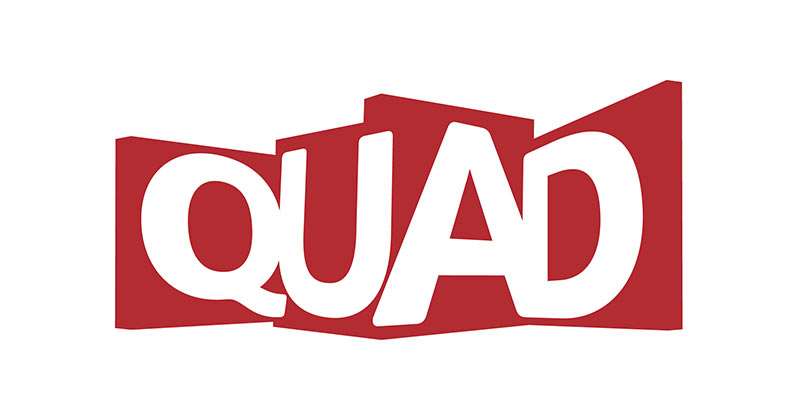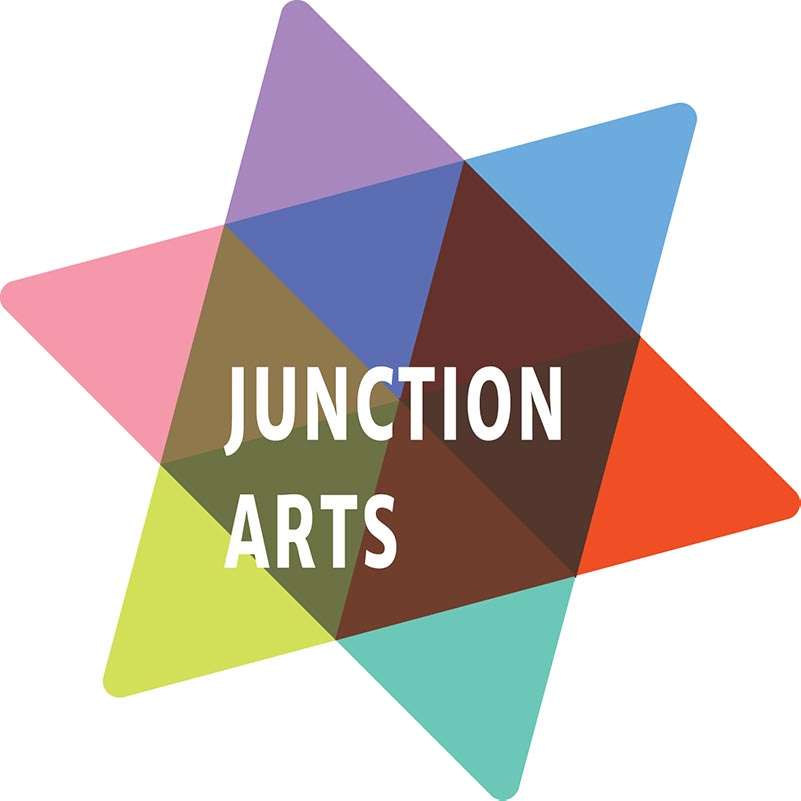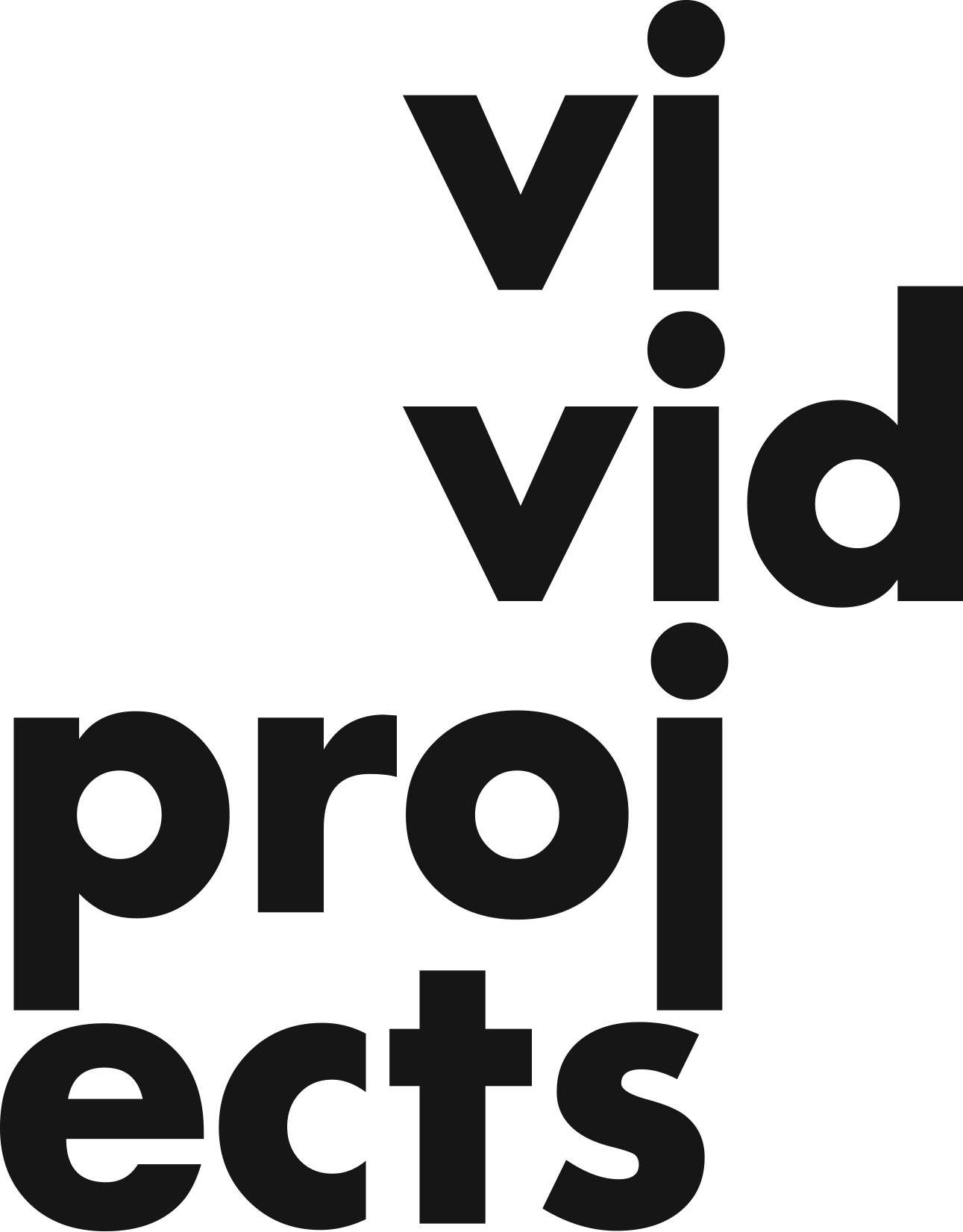Partners




Jenny Holt
March 2020
I'm drawn to places where the landscape feels caught in tension. Where I live in the South Pennines, there’s a visible and historical tension –avisually kind of primeval landscape haunted by the remains of the industrial age. There’s a strangeness about it, as if something vital is hidden. I’m interested in the dynamic between the pictorialism of this landscape and its entangled identities - past and present, urban and rural, bleak and sublime.
In East Northamptonshire there’s a similar interface. There’s a strong farming culture and visibly arable landscape, as well as a hugely significant logistics economy – an instantly visual counterpoint. Fields and sheds nestling up against each other. Then there’s the accoutrements of that: the roads, lorries thundering past.
*
This visual counterpoint was the springboard for the project. Nearly all my work starts this way – usually an image, sometimes a sound, evoking incongruities of place in some way. I'm very practical; I tend to have a rationale for everything I do, so a documentary methodology is a natural process. I worked in television documentary production for a while which was a very systematic way of working, and I learned a lot from that. I began researching in an open ended way - talking to people living or working in the area, organisations and workplaces, visiting libraries and museums, going for walks, hanging out in fields drawing, recording sounds, gathering observations, thoughts, ideas. Initial conversations with the District Council reinforced the focus on logistics and agriculture as the area’s key economies. Exploring Thrapston’s history opened up correlations between them. As well as it’s arable viability the town’s strategic location at a key river crossing point and trading route led to the granting of its market charter from King John in 1205. So both these present-day economies can be said to have historic roots in the town. This history also sparked my interest in forestry. The King’s royal hunting ground Rockingham Forest neighbours the town, pockets of the forest still in existence now managed by Forestry England. It’s interesting as my project partner Fermynwoods Contemporary Art, besides being named after one of Rockingham’s woodlands, has two arts project and education bases in nearby forest locations. So the working practices which feature in the film are all specific to the place, and connect in some way to the town’s medieval market charter. References to medieval Northamptonshire creep into the film in other ways. Drawing or filming in the landscape, the area’s ubiquitous church steeples impressed themselves - this later led to the inclusion in the film of stained glass windows from one of the neighbouring village churches.
*
I made contact with some of the town’s distribution companies who allowed me inside the warehouses. They showed me round and took me through the operations processes - I was able to take photos and talk to some of the employees. It was a fascinating experience. The sheer number of international employees at each hub took me by surprise. Going into the distribution warehouses made me more conscious of the relative invisibility of the workforce - their work, the systems, the products of labour, taking place away from public view. This is true of a lot of other economies too, but an inside/outside dialectic began to emerge more strongly, delineated by the initial visual idea.
*
People were incredibly friendly, open. Happy to talk. Inquisitive. After what turned out to be a pivotal meeting with Thrapston Young Farmers, I narrowed my focus on young people setting out on their working lives. I was just so impressed with how they talked about their work, describing particular skills or tasks or experiences as if telling a story, with such energy and enthusiasm. This sparked ideas about connecting tiny, seemingly insignificant tasks of work with wider narratives and networks of place and landscape. I was also interested in how people's own stories, their subjectivities of work and how they felt about their work might be suggested or materialised in the film. We would talk - about how they got into what they were doing, their motivations, their ambitions. You can't hope to include any more than a tiny piece of that in the film, but it does inform your approach. I found them so articulate and thoughtful, able to speak in a philosophical way about their work, and their lives. I’m just kind of really rooting for them - I want them to do really well in life.
*
The project’s duration over roughly 18 months was invaluable for ideas to filter and develop in a reflective way. It also allowed for repeated visits over the seasonal year. What would appear to me as dramatic and rapid changes in the arable landscape came as something of a shock each time I visited. Sudden changes in colour, patterns in the land and light. The harvest season was spectacular; the research period during the summer of 2018 was incredibly informative in how it was captured on film the following summer. There was also space for participant observation with Erin and Rowan as a way to capture a kind of tacit knowledge of their work before we started filming. I asked them both to teach me a skill – something I felt was probably quite difficult but they had learned easily and were able to perform automatically. Erin showed me how to worm a ewe who had just given birth, and Rowan taught me the correct way to plant young fir trees. He would show me and explain, while I took photos, then we switched places. So we both had the experience of what the other was doing. Rowan uses his camera a lot in the forests, and is an accomplished photographer.
This way of working extended to the observational filming process. Very quickly, in fact, the very first shoot I did, I thought, “Oh, yes, we're working. I'm working, they’re working, both working, but we're also having a conversation.” It was very important not to direct anyone. We did discuss beforehand what activities we’d film though. With Rowan in particular, there were obviously risk assessments, mainly because he was felling trees - it was lot of work for them to allow me to be there and film. So it did have to be managed to a degree, but I tried to limit that as much as possible.
It’s a very active and physical process. The shearing day was the most intense. Constantly moving, watching, repositioning. And then, you know, you’re jumping around between inside and outside – you reframe, there’s white balance and exposure and ISO and depth of field and then it's over, the sheep’s already gone. Constantly seeking, feeling, participating in it. I got too close to a sheep while trying to capture that incredible leap after they’ve been sheared, and the poor thing landed right on top of me – luckily we all plus the camera survived the crash. You’re very much in the experience. Erin taught me to roll a fleece while the shearing was going on, so I’d occasionally jump off the camera and roll a fleece or two. It’s a really exciting way to work, and it feels such a privilege to be there.
I was recording the sound at the same time, using a variety of different mics including binaural and contact mics – a lot of the diegetic sound in the film is a mix from two or three different mics recording simultaneously.
*
I recorded conversational interviews with all of the participants, but I didn't know if or how they’d be used. The whole process evolved. I have been a painter and then a television documentary maker, and I sometimes think of what I do now as a kind of synthesis of those processes. And I see moving image, even digital film, which I shoot on, as very material. So my feeling is that I’m literally getting my hands on the material when I'm in the edit. Pulling and pushing and picking out and layering, shaping. I see it like a substance, almost like paint.
It’s an improvisational process, and that’s partly the reason for collaborating with an improvisational musician for the score. I’ve rarely worked with music, and never with a composer or original score. I imagined an improvisational musician would be more adaptable to the fluidity of this process; I was interested to see how a musician might respond to the images and rhythms of the film, and how my editing might respond to their sonic ideas. I was doing drumming lessons and loved its physicality, and how playing a beat – and not playing it, the pause or space – made me think about life and time in a new way, which was feeding into the project. I found improvisational musician and drummer Felix Weldon through the Jazz School in nearby Rushden, which felt like it was meant to be. Felix was incredibly patient with my experiments and I was blown away by his work. After some back and forth between image/sound and music, Felix’s final recordings from a live performance in response to a timeline of shots from shearing to night harvests were worked into the fabric of the film, creating a space for new ideas, prompting me to imagine the world I had observed in a new way.
I did start with one framework - the seasonal passage of time which mirrored my filming period from spring to late summer - and as a companion to this, a structure approximating the span of a day from early morning to night . This meant for example making sure I had 4am shots of oil seed rape fields in full bloom in April, the start of my filming period – the shots which open the film. So then I had to keep the time of day in mind a bit as the season progressed.
The Great Bear references the constellation Ursa Major, which never sets below the horizon in the northern hemisphere and is visible all year round. Partly I was thinking of the participants in the film in that way, as a constellation. But I was also thinking about how these individual subjectivities, movements and focused tasks of labour in a tiny area of England ripple across space and time, how it’s all connected. This is one of the reasons I didn’t make a more overtly political film. And it was a particularly significant time politically as all the filming took place over that intense Brexit paralysis period of 2019. But I feel that as soon as you even tiptoe into that debate it gets entrenched and you're drawing lines. I thought the film should float in another kind of space, which means being sensitive to its permeability, a kind of fragility. You’re always negotiating that.